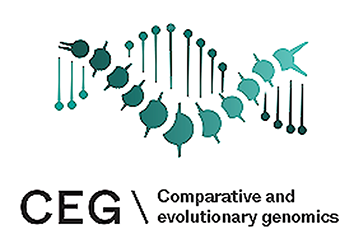As written in our last blog of the advent calendar, we had many changes already last year with a new group leader and a new group webpage, which we is still develop further this year. However, another change becoming effective this year is that we change the name of our group and have a logo for the group for the first time. A first draft of the logo in low resolution can be seen above.
“FEZ ist jetzt CEG, aber ansonsten ändert sich nichts.” (FEZ is now CEG, but nothing else changes). This is an old advertisement phrase from Germany for “Twix”. The German name “Raider” changed to the International name “Twix” and indicated that it is still the same, but the names are now harmonized across countries. It is similar with our group, our research and activities have gradually changed the last years so that the new name now better reflects what we are actually doing.
Our group “Frontiers in Evolutionary Zoology” (FEZ) expanded the last years and we have now some research interests beyond animals. Thomas is interested in plants and is a plant biologists. Anna-Lotta is working on protists and her MSCA-IF integrates animals hosts with two protist symbionts/parasites of these. In a similar vain, Vladimir has a project where he looks at the fungi associated with beetles and hence the major focus is on the fungi and not so much the animal host. Finally, our group has a leading role in many initiatives that addresses larger scale questions in biology such as BGE, ERGA or STADIS. Hence, we are not working any longer on animals only and “Zoology” does not really reflect our breadth any longer.
While we also address evolutionary research topics with hypotheses about processes, we have always been interested in explorative science looking at patterns in nature to be able to detect new hypotheses about species, other taxonomic groups or evolutionary processes. These discoveries build the basis for continuing hypothesis-driven research. Without explorative research, truly new discoveries are not possible. On the other hand, explorative research is often dismissed as descriptive and inferior to hypothesis-driven research. This is not the case and we therefore want to more strongly promote this kind of research by heralding it in our new group name.
The other aspect of our new group name is the term “genomics”. In our group, molecular data had always been the basis of our research complemented by other data. However, the focus of data we are using have changed more and more the last years to genome-scale data, also for basic taxonomic research questions. Moreover, we are representing the museum in many national and international genome scale projects such EBP-Nor, ERGA and BGE with our experience in working with challenging samples through out the years. For example, we gained these by our InvertOmics and museomics projects. As genome-scale data is the future of life science, we want to highlight that we are actively shaping and participating in this future.
Hence, our new group name is “Comparative and Evolutionary Genomics” (CEG) reflecting these changes and our research interests. The logo also takes up on this. The DNA helix stands for the genomic approach in our group and that we generally use molecular data as the basis of our research. The polychaete worm symbolizes that after all we still have a major focus in invertebrate animal, while we also venture into other groups such as vertebrates, plants, fungi and protists.
![]()
